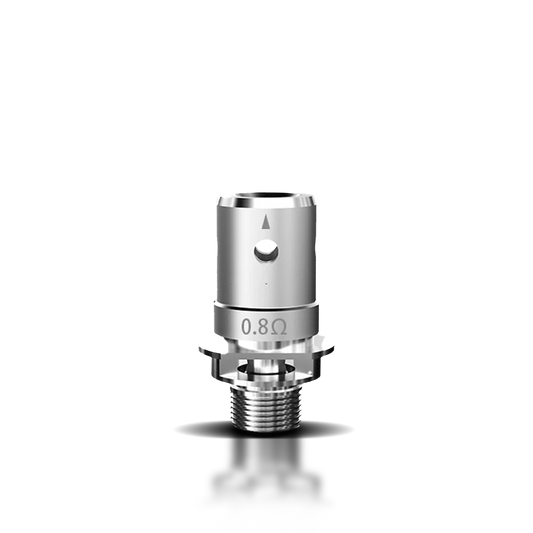
Second-hand vapour: what does science really say?
Few topics in vaping stir as much controversy as second hand vapour. Headlines often frame it as the new second hand smoke, a hidden danger floating in the air. Campaigners demand bans, while vapers argue that vapour is nothing like smoke. But when emotions settle, what does science really say? Understanding the reality of second hand vapour is crucial not just for vapers but for non vapers, policymakers and anyone who cares about harm reduction.
How vapour differs from smoke
Cigarette smoke is a product of combustion. Burning tobacco releases more than 7,000 chemicals, including tar, carbon monoxide and carcinogens. Second hand smoke is a proven cause of cancer, heart disease and respiratory illness. Vapour, by contrast, is produced by heating e liquid. It contains nicotine, flavourings, propylene glycol and vegetable glycerine, but no combustion. This fundamental difference means vapour dissipates faster, contains fewer toxins and does not cling to hair, clothes or furniture the way smoke does.
What research shows about vapour particles
Studies measuring the contents of exhaled vapour find far lower levels of harmful chemicals compared with cigarette smoke. A Public Health England review reported that second hand vapour exposure poses a fraction of the risk of second hand smoke. The main components detected are nicotine and trace amounts of aldehydes. Crucially, concentrations are often so low they are considered negligible in normal ventilation. Vapour particles are liquid droplets, which evaporate quickly rather than lingering like solid smoke particles.
Nicotine in second hand vapour
Nicotine is the compound that attracts the most concern. Some argue any exposure is harmful, especially to children or non smokers. Research finds that nicotine in second hand vapour is present at very low levels, far below what is considered biologically significant. For context, being in a room with a vaper produces less nicotine exposure than sitting near someone wearing a nicotine patch. This does not mean exposure is zero, but it challenges the narrative that passive vaping is equivalent to passive smoking.
Comparing air quality
Air quality tests in homes, cafes and labs show stark differences between smoking and vaping. Cigarette smoke increases fine particle concentration and toxic gases dramatically. Vapour may temporarily increase particle levels, but they evaporate within minutes. Carbon monoxide levels do not rise, because there is no combustion. Ventilated rooms return to baseline quickly. For bystanders, the environmental impact of vapour is far smaller than that of smoke.
Health implications for non vapers
The central question is whether second hand vapour causes measurable harm. To date, no evidence links passive vaping to serious health outcomes. Short term irritation of throat or eyes may occur in sensitive individuals, especially in enclosed spaces. But compared with the well documented dangers of second hand smoke, vapour does not carry the same long term risks. Public health agencies in the UK, including the Royal College of Physicians, acknowledge that the risks of exposure to vapour are substantially lower than smoking.
Why the media exaggerates second hand vapour
Media coverage often blurs lines between smoking and vaping. Images of large clouds look dramatic and invite fear. Campaigners frame vapour as a public nuisance or a hidden toxin. Fear sells headlines, but it does not reflect scientific consensus. The result is public confusion, with many believing vaping is as harmful as smoking, or worse. This undermines harm reduction by discouraging smokers from switching. Understanding facts helps cut through the noise.
Context matters: exposure in real life
Laboratory studies sometimes exaggerate risks by exposing subjects to extreme vapour levels not found in real life. In practice, exposure in public spaces or homes is brief and diluted. Vapour disperses quickly, especially with normal air flow. Non vapers living with vapers are exposed to some nicotine and aerosol, but again at levels considered insignificant compared with smoke exposure. Context matters, and context shows passive vaping is not the same as passive smoking.
Respect and courtesy in vaping culture
Just because science shows risks are low does not mean courtesy should be ignored. Blowing large clouds in confined spaces can irritate others, even if harmless. Social perception of vaping depends on respect, awareness and moderation. Many vapers already adopt informal etiquette, avoiding vaping around children, indoors without consent or in crowded settings. Respect builds trust and strengthens the argument for vaping as harm reduction rather than nuisance.
Second hand vapour in regulation
Policy often treats vaping like smoking, banning it in public spaces or workplaces. These rules are rarely based on strong evidence of harm, more often they reflect precaution or political pressure. While regulation can protect non vapers, equating vapour with smoke risks spreading misinformation. Proportionate policies should recognise the reduced risk while ensuring non vapers’ comfort. Overly restrictive laws may drive vapers back to cigarettes, undermining public health goals.
Final thoughts
Second hand vapour is not harmless, but science shows it is dramatically less risky than second hand smoke. It contains trace nicotine and minor irritants, but lacks the toxins and persistence of combustion. Public debate should reflect nuance, not fear. For smokers considering switching, knowing that vapour poses minimal risk to others may remove one more barrier to change. For non vapers, the message is clear, occasional exposure to vapour is unlikely to cause harm. The conversation should shift from panic to perspective.
Join the conversation and explore more
What do you think about second hand vapour? Have you experienced irritation, or do you see the scare as media hype? Share your perspective and join the discussion.
Curious to try safer alternatives? Visit Vape Lounge UK for e liquids, nicotine salts, shortfills, devices and accessories. We provide quality products that support harm reduction with style and confidence.
If you prefer in person advice, visit us at 147 Great Ancoats Street, Manchester M4 6DH or 71 Stafford Street, Stoke on Trent, ST1 1LW. You can also email hello@vapelounge.uk or call 0161 637 6066. Our team will help you make informed choices and find the right setup for your lifestyle.






